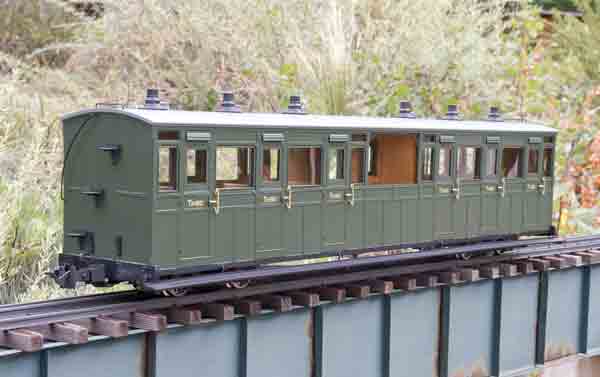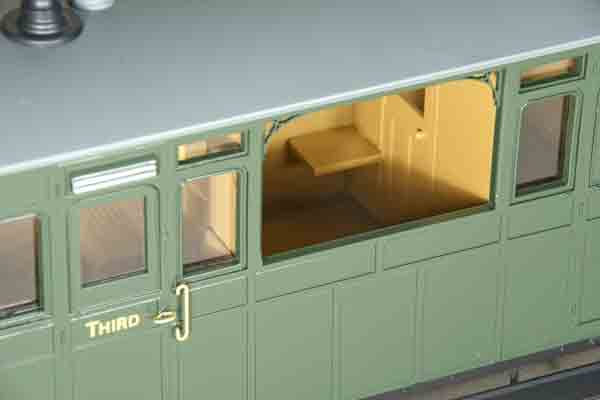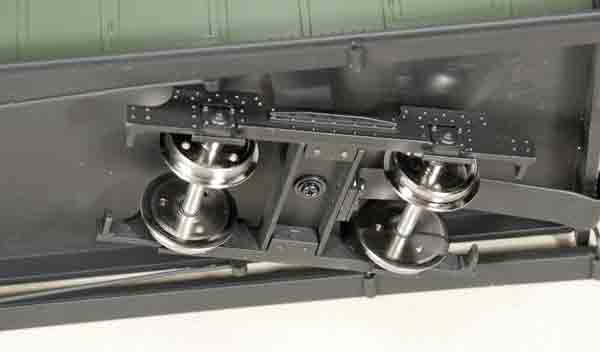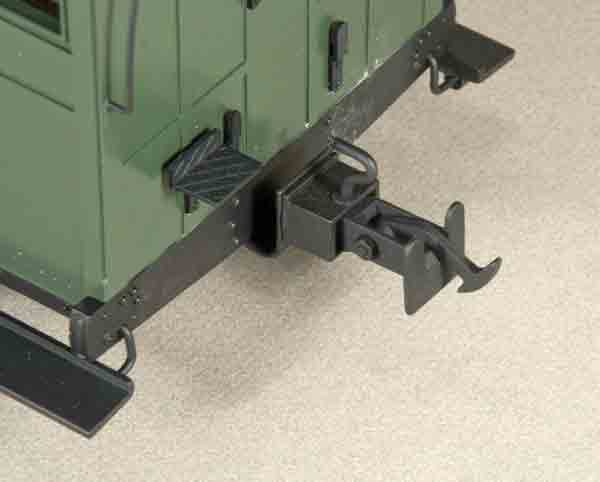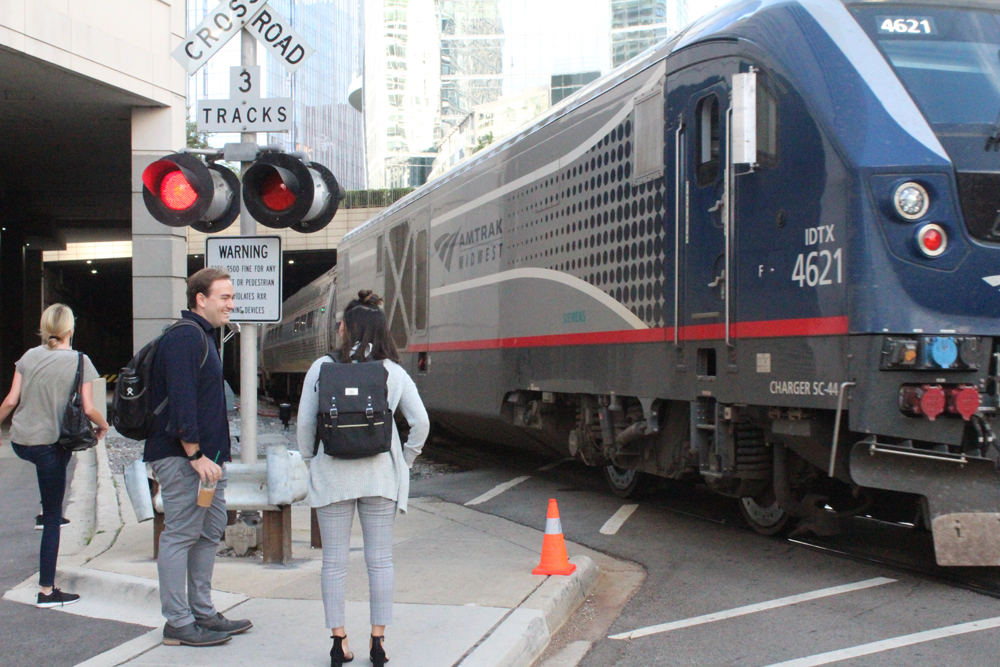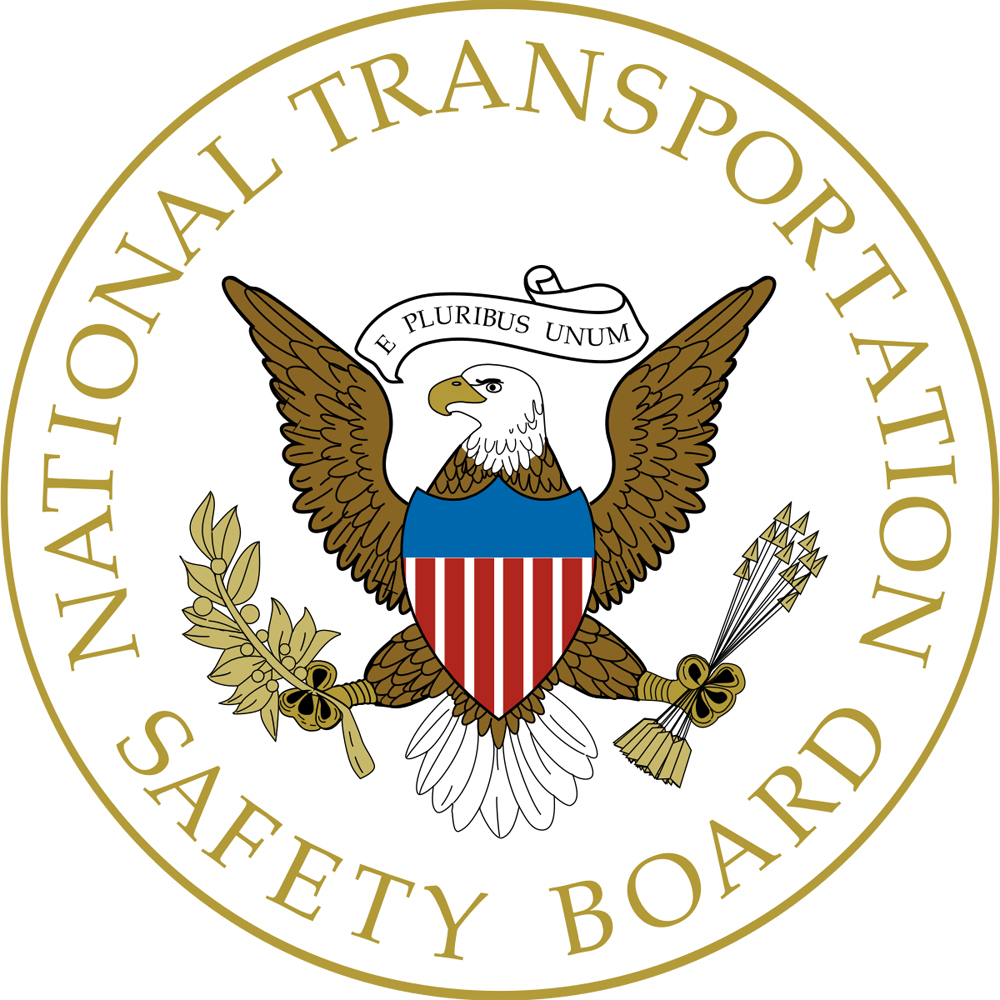British Model Supply
Available in the US from
Accucraft Trains
33268 Central Ave.
Union City CA 94587
Check with your local dealer for price and availability
Website: http://accucraft.com
Mostly plastic model of a Lynton & Barnstaple 3rd class, center-observation coach; non-opening doors; full interior; truck-mounted chopper couplers; unsprung, diecast trucks; gauge 0 and 1 metal wheelsets provided; decals provided for “Southern Railways” and different car numbers. Dimensions: Length over body, 22″; width, 4″; height over roof, 5½”. In 16mm scale, this works out to 34’11” x 6’4″ x 8’9″, respectively
Pros: Good fidelity to prototype; good level of visible detail; metal detail parts; can be set up for gauge-1 or gauge-0 track; full interior detail; smooth rolling
Cons: Complete lack of underbody detail
The Lynton & Barnstaple Railway is well documented and has always attracted a lot of interest. It ran large, 2-6-2 locomotives that pulled substantial trains of long passenger cars. Our review sample is one of these cars, a third-class coach with an open observation section in the middle.
The coach body is made of plastic. All visible details have been faithfully reproduced. The long running boards on either side of the car are supported by strong wire brackets. Door handles and grabs are also made of wire. The doors do not open. Large, glazed windows provide a good view of the interior. All seats and other interior details are represented. These appear to be unpainted plastic or, if they are painted, they are a single color. A serious modeler may want to get into them and pick out some of the details in appropriate colors of paint.
As supplied, the coach came with gauge-1 trucks (bogies), which are the wrong gauge for this particular car. Gauge-0 wheelsets are also included, along with replacement bolsters. Conversion, which involves removing and disassembling the trucks, took me around 20 minutes. The metal wheels are shiny but, because of the large overhang of the car body, they are not that visible. Trucks are made of die-cast metal and are unsprung but are free rolling. Couplers are of the “chopper” variety, which are prototypically correct. No others are supplied. These are mounted on long tangs, which are attached to the trucks for negotiating unprototypically sharp curves. (Couplers on the prototype were body mounted.)
L&B coaches were originally painted brown and cream. After the Southern Railway took over, they were repainted green. Our review sample is painted Southern green, with gray roof and black details. There is no underbody detail at all. Water-slide decals for “Southern Railway” and a variety of car numbers are provided.
Four different L&B coaches will ultimately be available. For modelers of the British narrow-gauge scene, these are welcome additions. Our review sample is a well made, sturdy model that acurately captures the character of the prototype coach.





